Resources
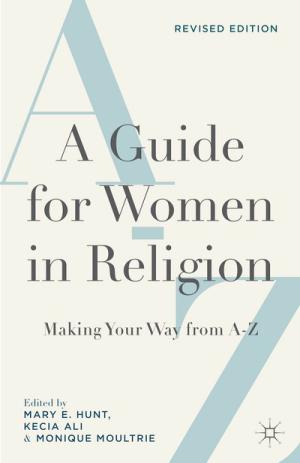
For many women, the transition into and through a career is not nearly as straight as a recitation from A to Z. To their eternal credit, Hunt, Ali, and Moultrie emphasize in almost every entry of their Guide for Women in Religion that the path for women is neither linear nor chronological. Despite vast political, legal, cultural, educational, and professional changes by and for women in the most recent decades, women are best served approaching their education and careers in this academic field of religion and religious studies equipped with this valuable, updated Guide for Women in Religion. Feminist theologian, professor, and human rights activist Dr. Mary L. Hunt edited the first edition of A Guide for Women in Religion in 2004 (Palgrave). That book’s existence was necessitated by some of the troubling realities that women face in the academic world of religion and religious studies; sadly, from undergraduate through tenured professorships, many – if not most – women encounter some form of the intersections of “sexism, racism, Christian hegemony, economic injustice, Postcolonialism, and discrimination based on sexual choices” (1). The authors note that encountering any of these issues can be made all the more difficult by women in power positions who replicate many of the abusive behaviors that are deeply entrenched in academic cultures (18, 131), behaviors which have for far too long tolerated, ignored and even sometimes rewarded. The second edition (2014) builds on a fine first edition, and offers an updated Resource section (201-04) that tackles the integration of technology and its implications for women in the field (especially as it relates to online teaching [120]), and extends advice that is applicable to an audience that spans from the first-year, undergraduate student to the emerita professor. In addition to an “Editor’s Introduction to the Revised Edition” (1-2), the “Introduction to the Original Guide” (3-8) is also retained, which provides useful history for the Guide’s original purpose: as more women entered the field, dominant realities that prevented female success resulted in increased questioning and subsequent development for women to “network, discuss common concerns, and share skills” (4). One of the many changes and tools introduced in the 1970s and 1980s was the Guide to the Perplexing: A Survival Manual for Women in Religious Studies (Oxford University Press). This vital guide was written to encourage pro-active approaches for female students and scholars, to educate women and men on the realities that women face in the field, and – perhaps most valuable – to name the isolating hardships that, for women, often result in self-blame, self-criticism, and loss of confidence. One of the more valuable and important insights that this book highlights is the way in which Christian hegemony dominates the field of religion (especially 35-37) and the multiple ways hegemony is manifest, from stages as vast as the AAR/SBL guild to the intimacy of the classroom. Made all the more challenging by Postcolonial understandings of religions as systems of belief which stand in opposition to one another (127-28), and all the more confusing when institutions welcome feminism within limits (35), women in the field of religion encounter Christian hegemony at the same time questions of social justice, diversity, race, and gender are being vigorously engaged (36). Guides such as this are not just useful, they are essential. Academia is, as the authors of the previous Guide wrote in 1992, a “minefield of stereotypes and prejudices,” (Guide to the Perplexing, 30) and hostilities that women face continue to be (not so) clear and present dangers. Consequently, this updated Guide for Women in Religion continues to remain relevant and necessary, despite the sweeping achievements of women in the field. While it is obvious that women engaged in the study or work of religion are the primary audience of this book, individuals of all gender identities would do well to pay heed to its contents; ignoring the importance of this guide for all people in the field of religion and religious studies does a disservice to the primary audience.
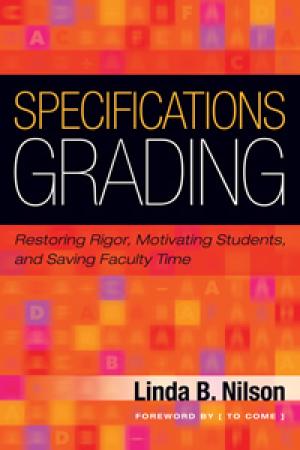
Concerns about mastery of learning outcomes or competencies, grade inflation, student motivation, and faculty time compel reflection on how we assess students in higher education. In Specifications Grading, Nilson critiques the traditional, point-based grading system and argues that students should be assessed on whether they have mastered course learning outcomes. She proposes specifications (specs) grading as a positive alternative to the current grading system. Nilson makes the case for specs grading in ten chapters. Chapter 1 examines critiques of the traditional grading system and offers fifteen criteria for judging a grading system. Chapter 2 briefly introduces learning outcomes and course design. In chapter 3, Nilson shows that grades should correspond to whether a student has mastered learning outcomes. Nilson ties grades to specific learning outcomes: a student can earn higher grades for demonstrating the amount of their learning, mastering more learning outcomes, or both (25). In chapter 4, Nilson argues that assessments should be graded pass/fail because this raises the expectation for a passing grade to the B-level. This also potentially reduces faculty time spent grading as it eliminates the need to justify partial credit. In chapter 5, Nilson outlines some aspects of specs grading: a single level rubric, faculty clarity on assignments and assessment, student choice, and opportunities to resubmit work. Chapter 6 describes how to convert specs grading to final course grades by either employing a point system for assessment or requiring students to complete certain assessments (bundles or modules) to achieve a particular course grade. Chapter 7 offers examples of courses that employ specs grading in diverse disciplines. After addressing theories of motivation, chapter 8 demonstrates how specs grading can motivate students to master learning through student choice. Chapter 9 explains how to design a specs grading course and introduce students to this grading system. Chapter 10 evaluates specifications grading according to the fifteen criteria set out in chapter 1. Among its strengths, Specifications Grading offers experiential evidence from faculty as well as examples of specs grading from diverse disciplines. These examples encourage faculty to creatively re-envision their courses. Moreover, Nilson challenges faculty to draw on adult learning theories and motivational theory to promote mastery of course outcomes and encourage students to achieve their potential. Nonetheless, Nilson recognizes faculty’s hesitation in committing to a new grading system. As a result, Nilson describes (pure) specs grading courses as well as blended courses: courses that employ a mixture of point-based assessment and specs grading. These options enable faculty to slowly adjust to the new grading system or to attend to departmental or institutional grading expectations. Nilson argues provocatively for the ways specifications grading motivates students and raises the standard of student work. To do this, faculty must know their expectations for student work and be clear in the directions for assignments. Moreover, faculty must expect students to fulfill those expectations – to take responsibility for their own grades and master course outcomes.
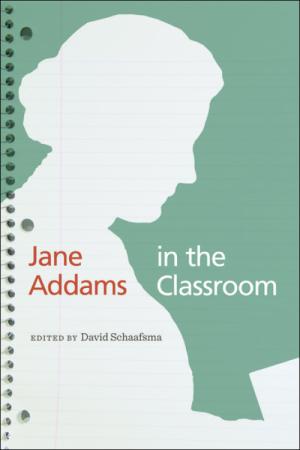
This book’s eleven essays propose ways in which educators might apply Jane Addams’s approaches to education and community engagement. Each essay offers a historical examination of Addams’s writing or work, followed by lessons in the practical application of her efforts to “socialize democracy” (13). With the exception of two Jane Addams Hull-House Museum affiliates, all contributions come from high school and university English instructors. Their general approach, however, applies to all educators, including those in religious studies and theology. As Petra Munro Hendry proposes, Addams’s work can inspire us to understand “teaching as a form of social ethics” (48). The book’s central message emphasizes the need to listen to and understand the experiences and worldview of one’s students and community. Concluding that the intellectual approach of our educational system fails to meet the needs of most citizens, Addams designed an “experiential, participatory learning” environment for the diverse immigrants of Chicago (62). She believed that accepted methods of cultural and social improvement for the working class merely reinforced the distance between social classes. Contributors to this volume interpret her approach as a challenge to teach social justice and engage the diversity of students’ experiences. Essays by Lanette Grate, Susan C. Griffith, and Erin Vail recount their successful classroom efforts to engage their students with local social justice issues, using Addams’s method of allowing current events to guide their work. Jennifer Krikava argues for the necessity of balancing the goals of outsiders (like standardized testing) with the need to equip students with skills that will enrich their future lives. Darren Tuggle agrees, demonstrating the benefits of reciprocal learning through his program that acclimates high school students to college life while providing learning experiences for university students training to become teachers. In these ways, educators address the unique needs and experiences of their students while simultaneously introducing them to the necessity of engaging their community and its social needs. Lisa Lee and Lisa Junkin Lopez explain how administrators can facilitate these processes through community programs. David Schaafsma and Todd DeStigter frame all these approaches as contributions to Addams’s efforts to “support democracy” (17). Retaining such a consistent focus unfortunately resulted in considerable repetition – several authors drew similar meaning from Addams’s account of the “Devil Baby,” for example. Greater variation and critique of Addams would have expanded its contribution and my confidence in the book’s historical interpretation. Schaafsma and Hendry’s essays offer sound critique, however, of current scholars and Addams’s contemporaries who dismissed her work and narrative-style writing as “sentimental” and “nonscientific” (190). The reformer’s methods reflected her ultimate point: dictating social change from a distance is undemocratic and at best ineffective, if not damaging. Reformers and educators must reject the dichotomy of benefactor and subject to embrace the contributions and participation of all people affecting a relationship, including those extending beyond the immediate contact. We can all use a reminder of this lesson, and this book suggests how to apply it to today’s educational system.
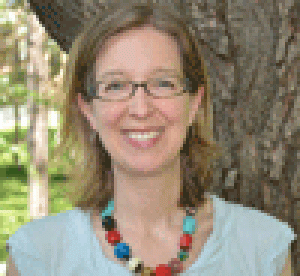
Kate Blanchard This is a post about that time I taught a semester-long class on a topic about which I knew almost nothing… or perhaps I should say “the most recent time.” This was no one’s fault but my own. I work at a college that has no requirement for...

Eric D. Barreto It’s that time of the semester when fine weather and the end of an academic term meld into one lovely concoction of hopeful anticipation. After a long winter, I am relishing the open windows and the warm sunlight. After a long academic year, the promise of summer...
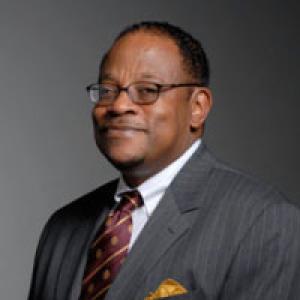
Stephen G. Ray Jr. Neal A. and Ila F. Fisher Professor of Theology Garrett-Evangelical Theological Seminary I admit that I was a bit flumoxed by how disoriented most of the students in my class were through much of the semester. My two very talented TAs were likewise lost for an answer. We realized late in the game that the reason for this seeming disorientation was there before us the entire time - we just resisted seeing it. Before continuing, it might be helpful if I shared a pedagogical decision I made about the teaching of the class. As I shared...
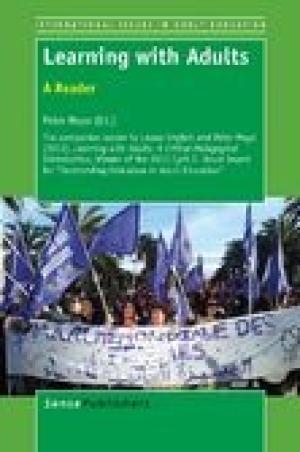
Learning with Adults begins with the following assumption: adult learning is central to the flourishing of a democracy, a democratic world, and practices of justice and peace. The volume borrows the foundations of Paulo Freire, Jürgen Habermas, John Dewey, Theodor Adorno, Jack Mezirow, and other critical theorists and democratically-minded educators and philosophers to develop a substantial discourse around adult learning. This volume is a companion to the original, Learning with Adults: A Critical Pedagogical Introduction (2012, Sense Publications) and is volume 13 in a series committed to the expanding field of adult learning centered in emancipatory, democratic, and critical studies. This second volume developed as a multi-authored extension of the initial volume. The authors of the initial volume understood that more work needed to be completed around adult learning as it relates to sexual orientation, disability, literacy, and consumer rights. The authors extended this initial plan to include chapters on relating adult education to poverty, libraries as learning sites, social creation, aesthetics, and media. Unlike traditional reader-companion volumes, this reader does not provide the foundational texts for the initial volume but provides amplifying essays brought together by contemporary authorities in adult learning and outside scholars, including Zygmunt Bauman. This is an interesting collection as it lays out essays toward an emancipatory vision for adult learning and away from the consumerist or compliance categories of training and education. The volume has five parts, beginning with the learning society and moving through questions of identity, instruments of practice, and learning in everyday life. The final section is on policy and context, which connects to an important literature on citizenship education for adult learners. The volume makes a contribution to the definition and scope of adult learning. In sum, adult learning, throughout the volume, is best understood from Oscar Negt. In his essay, “Adult Education and European identity,” he says adult learning is “learning processes that are determined by people’s own interests and horizons of perception, so that general relationships are made comprehensible” (126). The assumption throughout the volume is that adult learning is dynamic and that the methods, processes, and outcomes constantly shift as people’s own interests and horizons of perceptions shift. D.W. Livingstone outlines how adult learning that is emancipatory extends the scope of education and reverses the trend that “we may becoming increasingly willfully ignorant societies rather than learning ones” (33). Each of the chapters offers models for adult learning, some better than others, to increase critical thinking and to challenge societal norms. Several of the essays highlight the social inequality evident in access to formal education and claim that social and economic class status continue to be roadblocks in granting access to transformational learning. Adult learning, for these authors, is an invitational practice for all people and is, in itself, emancipatory. The authors continually highlight how the history of education (à la Meyers [1960] and Smith [1955]) is in need of ongoing critique if education, specifically adult education, is going to move beyond compliance and consumerist practices. These essays press against dominant ideologies, namely that “the dominant tendency in contemporary thought has been to equate learning with the provision of learning opportunities in settings organized by institutional authorities and led by teachers approved by these authorities” (37). Adult education has rarely moved beyond this dominant trend and has mostly accentuated it, which limits transformative learning for marginalized adult communities. The essays engage in a clear critique while also offering models for emancipatory and transformational adult learning processes (see Livingston’s and Cranton’s chapters). These models are the take away gifts from the volume. The models fall into three categories. The first set of models are site-based learning models, where the locations of everyday life are taken up as locations for learning. The second set of models arise from within the institutionalized practices of societies, where social and economic practices invite critical questions and transformative learning opportunities; and the third model is rooted in the ideologies of good education, namely processes to enact justice and peace. Overall, the volume holds education for adults as a learning paradigm for its own consideration. The site-based learning discussion recognizes that learning spaces are most often beyond the classroom and are found in the student’s everyday experiences. However, adult education that occurs in a classroom then becomes, itself, a site of the everyday experience. Additionally, this volume is a model for how the liberal arts tradition is a common practice in adult learning, whereby multiple disciplines make intersections around a common question. There is broad range of voices from education, philosophy, economics, sociology, and elsewhere included, yet all are committed to common questions of lifelong adult learning. Finally, the volume in itself is an adult learning model; the renaissance feel to the book results in unexpected points of informational learning for the reader. For example, on the topic of capitalism’s impact on the labor force and access to education, D.W. Lingston highlights that in 1983 only 28 percent of workers needed a college degree; by 2004 this figure rose to 45 percent. What is important is that over this same time period, degree attainment increased from 22 percent (of the population) to 54 percent, which is an increase of 34 percent (46). The data assists the reader in understanding how formalized processes of education result in trends toward underemployment. The point of information locates the implications of economics on the practice and process of adult learning. The volume, however, falls short of expectations. I was expecting the inclusion of several foundational texts in relationship to the field of adult learning. Also, several of the essays trail away from the central argument around learning with adults into diatribes on the respective intellectual agendas of each author; this is both a gift and burden. Each of the diatribes is not unimportant yet limits the volume’s coherence toward detailing models and processes for adult education amidst diverse populations. The positive aspect of this is mentioned above. I recommend this volume to curious readers. Learning with Adults assists its readers in understanding the complexities of learning with adults and makes clear that the field of adult learning is underdeveloped and misunderstood when connected to the traditional avenues of education. If a reader is looking for a more basic and invitational text on the topic of adult learning, I recommend purchasing the first volume in this series (English and Mayo, Learning With Adults: A Critical Pedagogical Introduction, 2012).
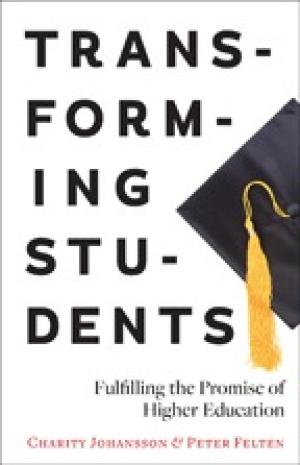
North American faculty often teach and work in milieus in which the value of a liberal arts education is continuously in question. Economic realities of the last decade have prompted administrators, faculty, and practitioners to think more deeply about the sustainability of liberal arts institutions in general. And, in some contexts, the transition to increasingly corporate models for higher education leadership means that terms such as customer service, brand, and product are gaining utility in order to emphasize the value of a liberal arts degree in a competitive market. Charity Johansson and Peter Felten recognize these trends and contend that a liberal arts education should provide spaces for college students to learn how to embrace change and encounter the unknown: faculty should be emphasizing a transformative learning process rather than a informative one that offers facts but does not push students to develop abilities to deal with complex variables after graduation. Johansson and Felten argue that a university can provide an environment conducive to transformative learning by clarifying its purpose and by developing a student’s capacity and opportunity for positive change (1). Johansson and Felten’s research is grounded in the recent literature on transformative learning in the field of adult education; Transforming Students applies these concepts and theories to young adults with the intention of emphasizing the practices and theories in which transformation can readily emerge in higher education (4). According to the authors, the content of transformative learning begins with disruption and is followed by reflective analysis, verifying and acting on one’s new understanding of the world, and integrating what one has learned and practiced into everyday life (3). A sharp contrast is drawn between informative and transformative teaching and the various pedagogical practices that characterize them. Administrators, staff, and faculty have a responsibility to not only provide a safe, welcoming space for transformative learning to occur (which includes disruption and dissonance), but they also ought to respond holistically, meaningfully, and with integrity to the spontaneous actions of students who are “find[ing] their way along their journey” (89-90). The interplay of the individual and community in this transformative learning process will effect change because “the ultimate outcome of this type of learning is action in community” (82). If taken seriously by the educator and the institution, transformative learning has the potential to change both the institutional context and the broader community. Johansson and Felten do not speak explicitly about religious studies or theological education, but an adept reader can easily apply their theory of transformative learning to any classroom context. With its emphasis on mentoring and creating safe spaces for openness, disruption, and critical reflection, this text prompts readers to reflect deeply about their role as educators, practitioners, or co-curricular programming staff. The cited research is qualitative rather than quantitative; much of the evidence used to support Johansson and Felten’s argument is anecdotal in nature from the context of Elon University. This may be seen as a lacuna in the evidence to some readers, but overall the anecdotal evidence provides a clear, precise thesis that is rooted in students’ experiences of transformation during their time in college. Though other texts may need to be referenced for an in-depth, quantitative approach to higher education research, Transforming Students is especially helpful for those who want to read a short, accessible text that theoretically grounds pedagogical styles and higher education practices as transformational to “prepare students for a life of continuous change and development” (2). This book is not a list of best practices across the landscape of liberal arts institutions – though some best practices from Elon University are used as examples – but rather it serves as a convincing argument for transformative learning as a crucial paradigm for pedagogy, practice, and the holistic institutional mission of liberal arts colleges and universities. According to Johansson and Felten, transformative learning does not have to hang in the balance: there are indeed practices and methods that provide intentional spaces and opportunities for facilitated reflection and increased transformation. This concise text encourages educators, provides simple entry points into pedagogical theories, distills current student development research into poignant sound bites, and offers conceptual measures for engaging the transformative learning process with one’s own students, both inside and outside the classroom.
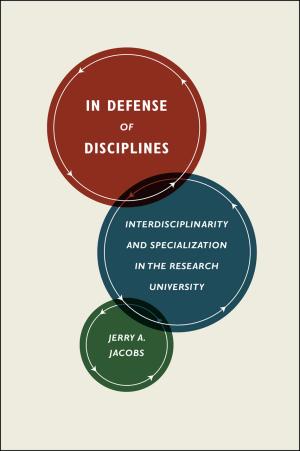
What is the use of academic disciplines? Answers to that question have encouraged the growth of interdisciplinary programs on many campuses, either by simply encouraging conversation among people in different fields or by at least partially dismantling the system of disciplines. This book employs data and case studies to challenge the enthusiasm for this potentially disastrous revolution. Jacobs argues that interdisciplinarity already exists everywhere in higher education (123) and that efforts to push for more will not pay dividends worth the effort. He warns administrators and faculty away from seeing interdisciplinarity as an end to itself or a way to significantly change rates of scholarly cross-fertilization. In short, this book is a call to nurture and appreciate what already exists. The focus is largely on the research agenda of larger universities, but Jacobs dedicates a chapter to considering “integrative education” for undergraduates, noting that “The question of how the education of undergraduates should be organized is just as large and just as complex as the issues pertaining to research” (188). An integrative education is distinguished from an interdisciplinary education by its approach rather than the number of its disciplinary parts. Jacobs notes that interdisciplinary programs such as African American studies and women’s studies, often founded because of faculty interest, generally have low student enrollment, in part because students can find integrated learning in cross-listed classes and double majors. Jacobs sees efforts toward creating systems to promote interdisciplinary majors as folly. Based on the evidence, “we cannot say that interdisciplinary education represents a discernible improvement over the traditional disciplinary fields” (208). According to Jacobs, the biggest challenge to undergraduate liberal arts programs are the more vocational, applied majors, such as communications and business, fields that do not encourage critical thinking or the kind of breadth needed for true integration of knowledge. To Jacobs, rapid changes in our world require that students learn less tangible skills, such as making connections and seeing things from multiple perspectives. The applied fields have become increasingly myopic: he notes that liberal arts disciplines are far less likely to splinter into subspecialties than applied fields that split due to job market pressures (Table 9.2 identifies twelve specialties within the combined fields of philosophy and religious studies). Jacobs writes, “As we have seen, reformers typically define the term ‘integrated’ as synonymous with broad, but, ironically, education that is holistic, integrated, effectively combining theoretical and applied dimensions, experiential, and classroom-based knowledge, is more likely the more highly circumscribed the topic and setting” (197). Too much specialization, he argues, blunts this effect. The conclusion here is that “the liberal arts are not the problem but rather the best hope for a broad and demanding education in a world that increasingly depends on educated citizens and open-minded professionals” (189). This book is recommended to anyone interested in the rise (and decline?) of interdisciplinarity on college campuses and debates over the value of the liberal arts.
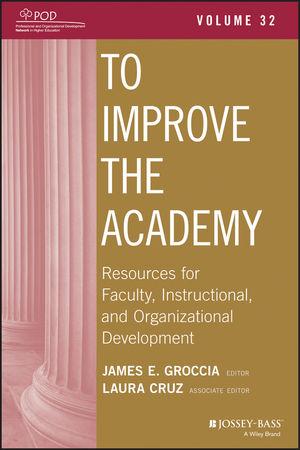
This volume of twenty-one essays comes from the Professional and Organizational Development Network in Higher Education (POD) and is directed to faculty and institutional development staff, department chairs, faculty, deans, student services staff, chief academic officers, and educational consultants. Commensurate with their agenda to facilitate creative exploration, the essays are organized after they are collected, and arranged loosely by topic with about three essays per topic. The topics include developing new paradigms for faculty and professional development, tailoring faculty development to diverse audiences and partners, refining faculty development programs for maximum impact, reflecting on and advancing what developers do, responding to different graduate teaching assistants’ needs, enhancing student learning, and advancing new pedagogical concepts. The essays are written by educators and developers throughout the POD network and undergo a double-blind peer review system. As such, they do not deal with classroom teaching and application per se, but with ways to motivate, involve, measure, and prioritize self-reflective and critical development among educators. Several essays are of particular interest because they propose responses to changes emerging in higher education. Drawing on research into video games and their ability to attract and retain learners, for example, an essay by Kevin Yee encourages educators to apply game theory principles to course design (335-348). Even when instructors might not have the technical savvy to generate their own video game, they can apply the principles of successful gaming with low-tech options in their course design. For example, instructors might design learning opportunities that are narratives (such as a case study or an urgent problem that needs to be solved), have calibrated difficulty and rapid feedback response (such as online quizzes that can be taken until they reach 100 percent), employ diversions (such as add-on TED talks), and generate competition. Another essay, by Al Rudnitsky et al., describes a college-wide multiyear professional development effort that addressed the need for instructors to adapt their expertise to changing needs of students (127-143). It examines how instructors at Smith College formed a process-oriented (rather than skill-based approach) faculty learning community that explored recent research on how people learn, applying it both in their classrooms and in their learning community. They applied such principles as these: ultimately learning depends on what learners do, not what teachers do; existing knowledge has a profound effect on learners’ current thinking and learning; effective learners are metacognitive in that they set goals, self-monitor, and self-regulate; and learning is socially situated and mediated; the instructor’s task is to design complex learning environments and motivate students through evaluation. They contend, “understanding and deep learning that allow for better knowledge transfer and preparation for future learning are privileged educational outcomes” (133). The goal of the process, they found, was to build knowledge through discourse, idea improvement, and collective cognitive responsibility (135). In a third essay worth noting, Michael J. Zeig and Roger G. Baldwin describe concrete recommendations to help senior faculty (sixty-plus years, about 33 percent of professors in the U.S.) develop new meaning and purpose in this phase of their academic life. They suggest that senior faculty reflect on the priorities of their career and identify what resources they need, reconsider what success means in late career, seek out co-mentoring opportunities (in which younger faculty members share their expertise with their mentors, especially in technology), and plan their own professional development. Administrators, deans, and chairs need to see senior faculty members as individuals, maintain reasonable expectations, provide relevant development opportunities, and recognize and appreciate achievement (83-86). This volume is a valuable resource, with a rich bounty of essays geared to building, sustaining, evaluating, and promoting faculty development programs.
Wabash Center Staff Contact
Sarah Farmer, Ph.D
Associate Director
Wabash Center
farmers@wabash.edu